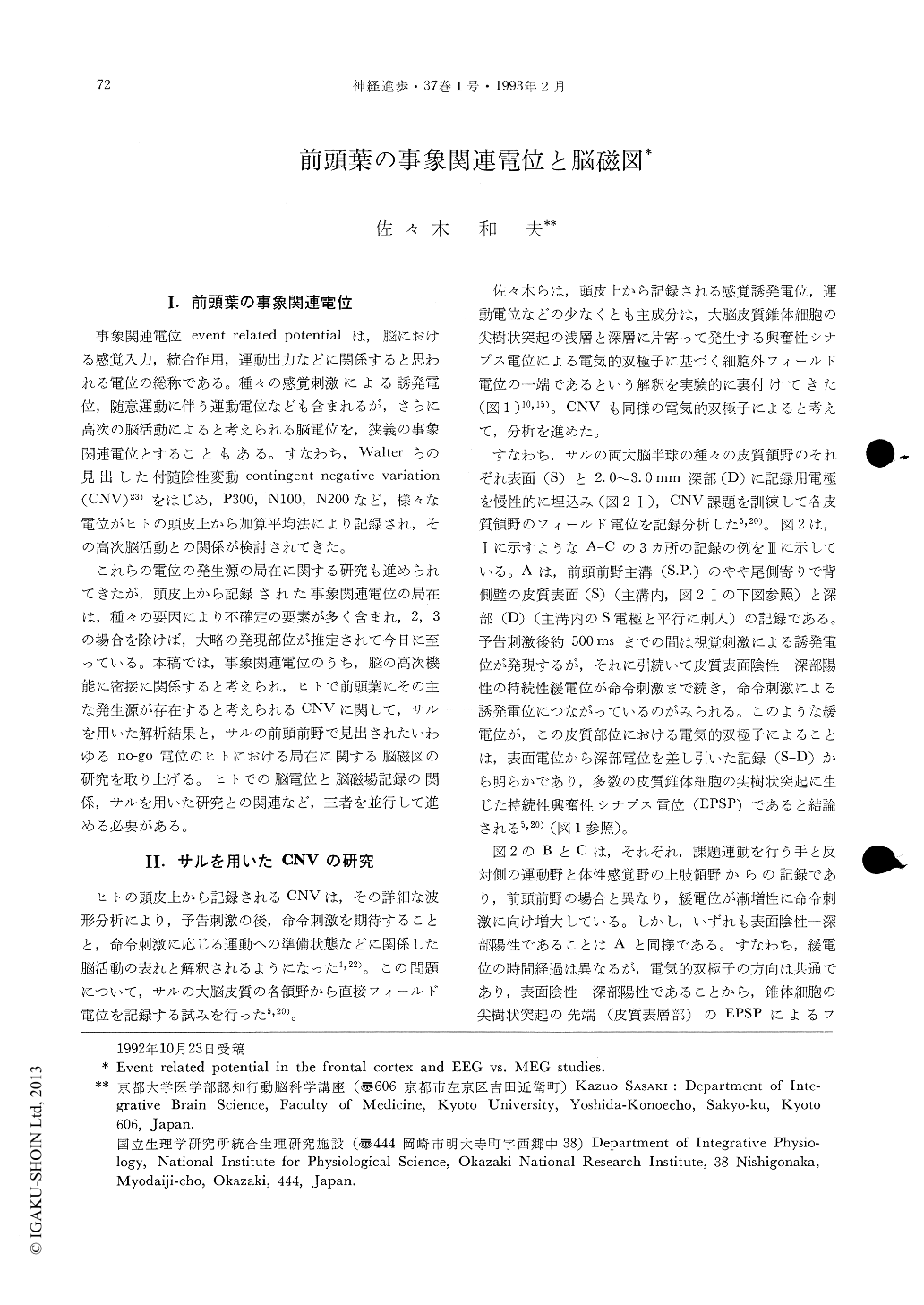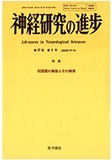Japanese
English
- 有料閲覧
- Abstract 文献概要
- 1ページ目 Look Inside
I.前頭葉の事象関連電位
事象関連電位event related potentialは,脳における感覚入力,統合作用,運動出力などに関係すると思われる電位の総称である。種々の感覚刺激による誘発電位,随意運動に伴う運動電位なども含まれるが,さらに高次の脳活動によると考えられる脳電位を,狭義の事象関連電位とすることもある。すなわち,Walterらの見出した付随陰性変動contingent negative variation(CNV)23)をはじめ,P300,N100,N200など,様々な電位がヒトの頭皮上から加算平均法により記録され,その高次脳活動との関係が検討されてきた。
これらの電位の発生源の局在に関する研究も進められてきたが,頭皮上から記録された事象関連電位の局在は,種々の要因により不確定の要素が多く含まれ,2,3の場合を除けば,大略の発現部位が推定されて今日に至っている。本稿では,事象関連電位のうち,脳の高次機能に密接に関係すると考えられ,ヒトで前頭葉にその主な発生源が存在すると考えられるCNVに関して,サルを用いた解析結果と,サルの前頭前野で見出されたいわゆるno-go電位のヒトにおける局在に関する脳磁図の研究を取り上げる。ヒトでの脳電位と脳磁場記録の関係,サルを用いた研究との関連など,三者を並行して進める必要がある。
A few examples of event related potentials in the frontal cortex, especially in the prefrontal association areas, were presented with direct recordings from the cerebral cortex of monkeys and with EEG and MEG recordings over the scalp of human subjects, and functional significances of the potentials were discussed.
CNV (contingent negative variation) recorded from the human scalp on warning-imperative (W-I) stimuli was interpreted as being due mainly to sustained EPSP currents generated in the superficial parts of apical dentrites of pyramidal neurones in wide areas of the frontal cortex according to the direct recording in monkey experiments. The sustained EPSP currents were recorded from the prefrontal, premotor and supplementary motor cortices on both cerebral hemispheres, whereas gradually increasing EPSP currents toward the I stimulus were from the motor and somatosensory cortices contralateral to the operant hand. The W-I task enables the human and the monkey to respond to an external I stimulus at very short latent time as experienced in 'ready-go' start in athletics and swimming. Functional implication of the cerebro-cerebellar interaction which shortens reaction times on stimulus triggered movement ('cerebellarization') was discussed in relation to the sustained excitation of the frontal association cortices on W-I stimuli ('prefrontalization').

Copyright © 1993, Igaku-Shoin Ltd. All rights reserved.


